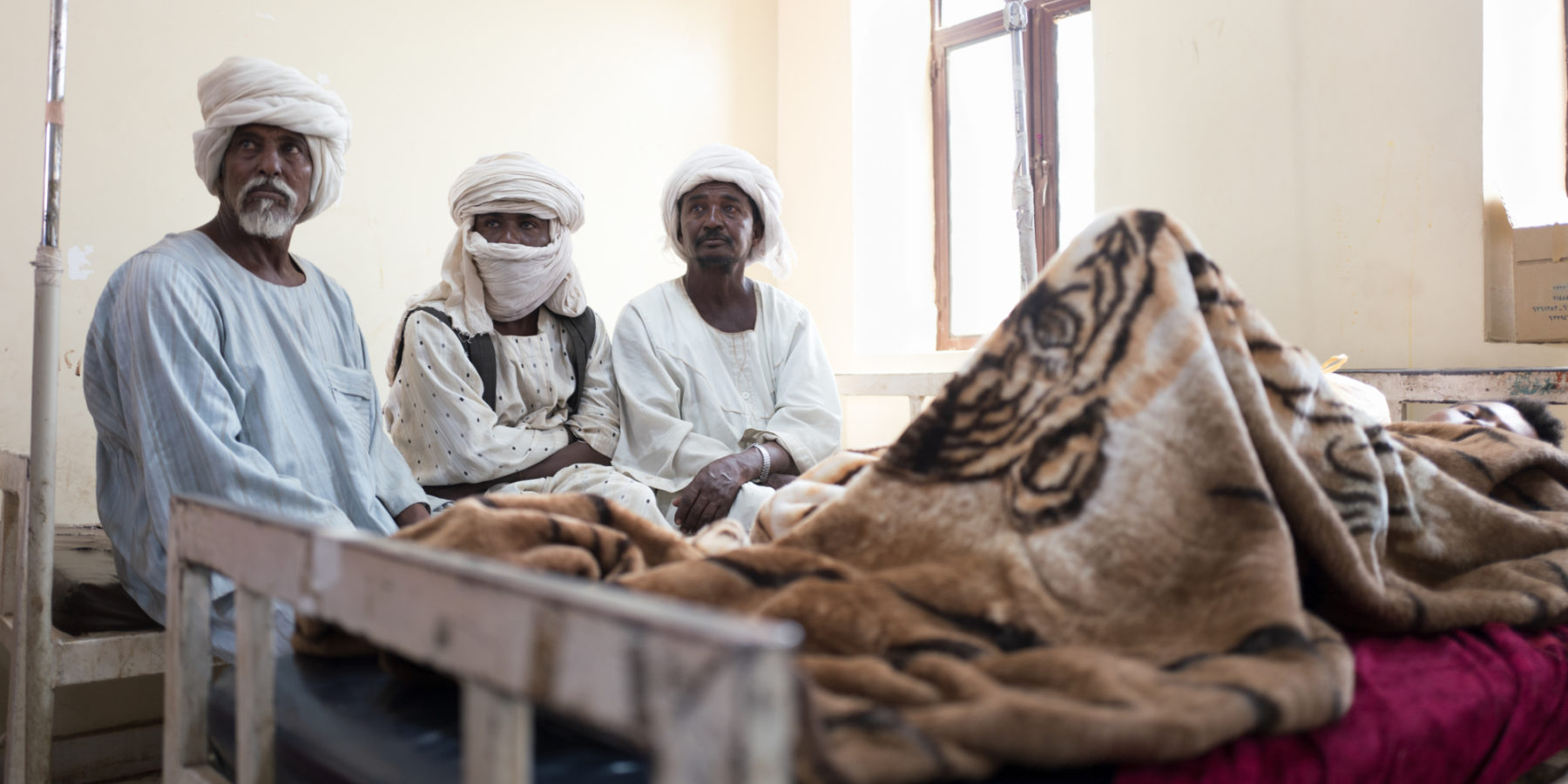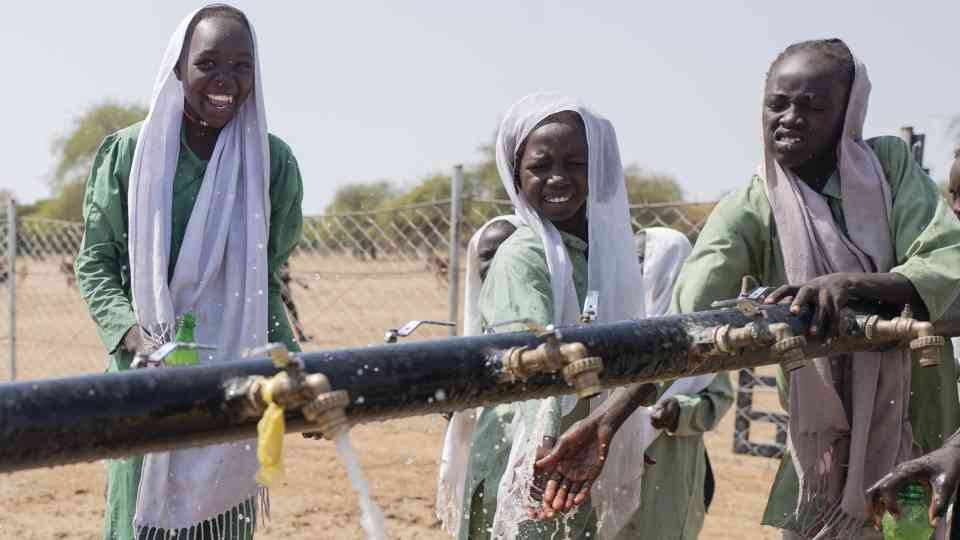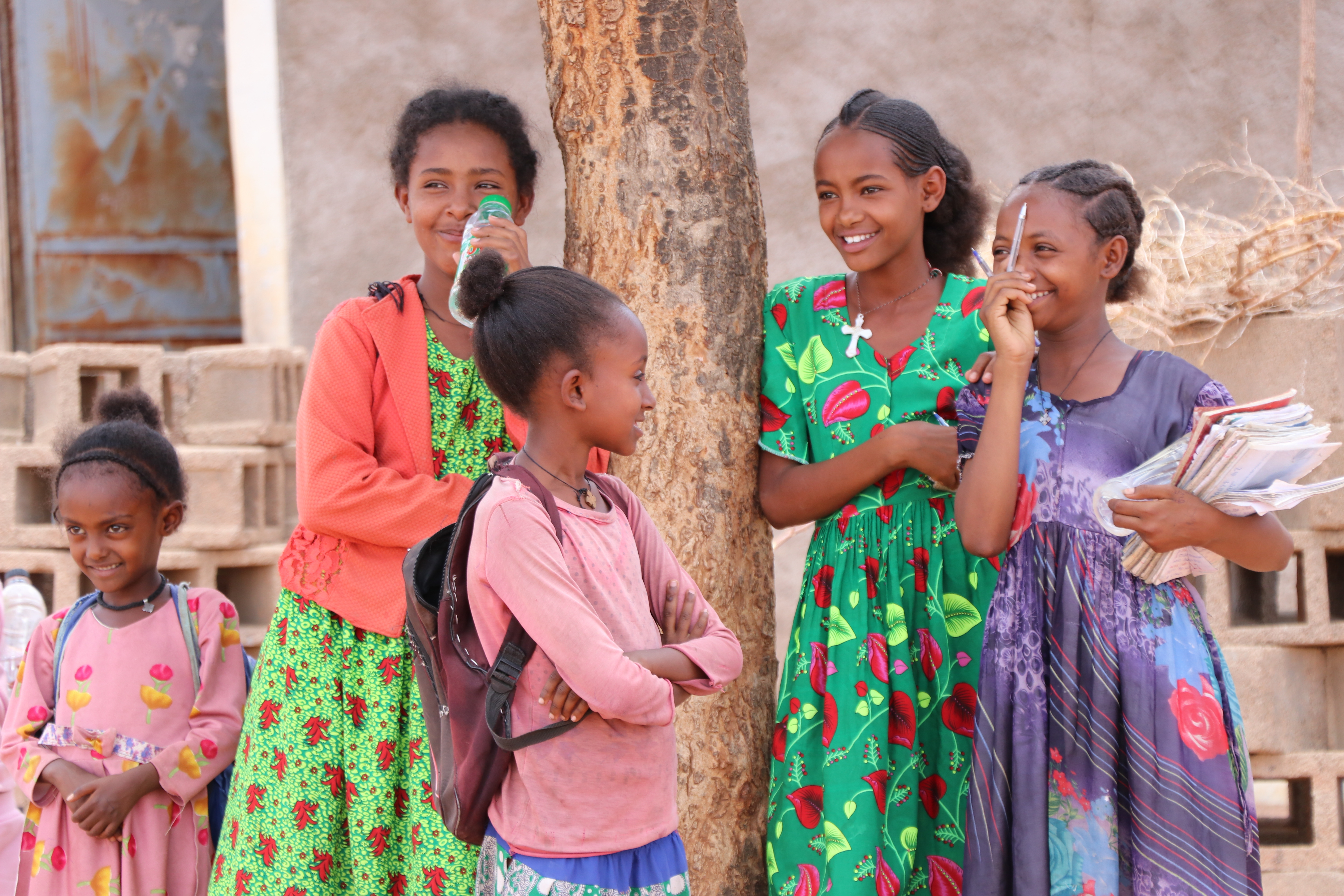The United Nations Office for Project Services (UNOPS)

Roads to recovery
Better infrastructure is vital to supporting Darfur’s recovery process.
Every year during the rainy season, communities in Ed Daein in East Darfur, Sudan face difficulty accessing essential services like schools, markets and hospitals. Roads are prone to flooding, cutting off entire communities and putting people at serious health risks from mosquitos, which are attracted by pools of stagnant water.
These challenges are not unique to Ed Daein, but are prevalent across Darfur, where communities have traditionally settled along seasonal watercourses, or wadis. Many roads cross these dry streams, which only flow with water during the rainy season.
“We had to place bricks and sand bags on the ground and use them to cross over. You could have slipped or fallen on the bricks. It was muddy. Our children would fall whenever they tried to crossover. Heavy vehicles would get stuck,” explains Alhassan Almaki Ahmed, a resident of Ed Daein.
For Alhassan, who works as a merchant exporting peanuts, better roads are essential for his business, which relies on heavy-duty trucks to transport thousands of tonnes of peanuts every year to Sudan’s capital, Khartoum.

"Being able to travel is fundamental for human beings. It helps people connect. Better roads help us move our goods easier."
- Alhassan Almaki Ahmed, a resident of Ed Daein
To help improve road conditions, through a project funded by the Qatar Fund, UNOPS in partnership with the International Labour Organization (ILO) built culverts, or drainage structures, at more than 20 crossing points across Darfur, helping to prevent roads from flooding and improving access for over 2 million people.
“The trucks can now move smoothly. Even during the rainy season people can work or get to the market, and children can go to school,” says Alhassan.




Better healthcare
As Darfur slowly recovers from years of armed conflict, improving critical infrastructure is essential to support the region’s transition from humanitarian assistance to recovery and development.
“Following major armed conflict, infrastructure throughout Darfur is in dire need of rehabilitation and reconstruction. Many facilities like schools, water infrastructure, hospitals and roads were either destroyed or have fallen into disrepair,” explains Ismail Mohamed Abbas, UNOPS Senior Project Engineer in Sudan.
At Ed Daein’s main hospital, which treats up to 150,000 people every year, a lack of recovery wards often resulted in overcrowding.

“In the past, we used to put men and children in the same ward. In the women’s wards, it was the same situation. Now wards are divided,” explains Nataly Teirab, a nurse of 17 years who works in the men’s surgical ward.
"Human souls are very precious. Seeing someone weak and unwell, and you save their life… It is not an easy thing to do. If I hear about an accident and it’s my day off, I will go into work to help."
- Nataly Teirab, Nurse at Ed Daein’s main hospital

Some weeks Natly might attend up to 20 patients, many of whom require emergency treatment following minor conflicts. According to Nataly, the busiest time on the ward is during harvest season, between October and February, when fights can break out between herders and farmers over limited natural resources.


Having adequate facilities to respond to these emergencies is crucial for saving lives. Dr Faisal Adam Ahmed, the district general of the Ministry of Health in East Darfur says: “We have come a long way in terms of the care and treatment we can provide patients. Our health facilities are slowly improving, but of course a lot more must be done to ensure people receive the best care they deserve.”
To improve Ed Daein’s health services, UNOPS together with UN Habitat and Sudan’s Ministry of Health built an additional recovery ward, which is being used as the main surgical ward for men, and a new operating theatre. The hospital’s maternity ward was also rehabilitated. In addition, two rural health facilities were constructed and a further two hospitals rehabilitated in East Darfur.
About this project
The United Nations Fund for Recovery, Reconstruction and Development in Darfur (UNDF) was established following the signing of the Doha Document for Peace in Darfur in 2011 to support Darfur’s transition from humanitarian assistance to recovery and development.
With funding from the Qatar Fund, UNOPS is working on a range of infrastructure projects throughout Darfur to assist recovery efforts and aid the transition process.
As part of the 'Rehabilitation and construction of feeder roads and crossing points in Darfur' project, implemented in partnership with ILO, 23 culverts have been built at important crossing points, improving access to essential services for more than 2 million people.
A second project – 'Upgrading and rehabilitating the existing health facilities and basic health services in selected return sites in Darfur' - implemented by UNOPS in partnership with UN Habitat and Sudan’s Ministry of Health, has helped improve 19 health facilities across Darfur.
A third project – 'Recovery of livelihoods of vulnerable farming and pastoral communities in Darfur' – implemented by UNOPS in partnership with the Food and Agriculture Organization and ILO, aims to promote peace between pastoralists, farmers and returning refugees by improving access to water. Twenty subsurface dams will be constructed across Darfur to raise the level of water catchments in surrounding areas, helping to alleviate poverty.













